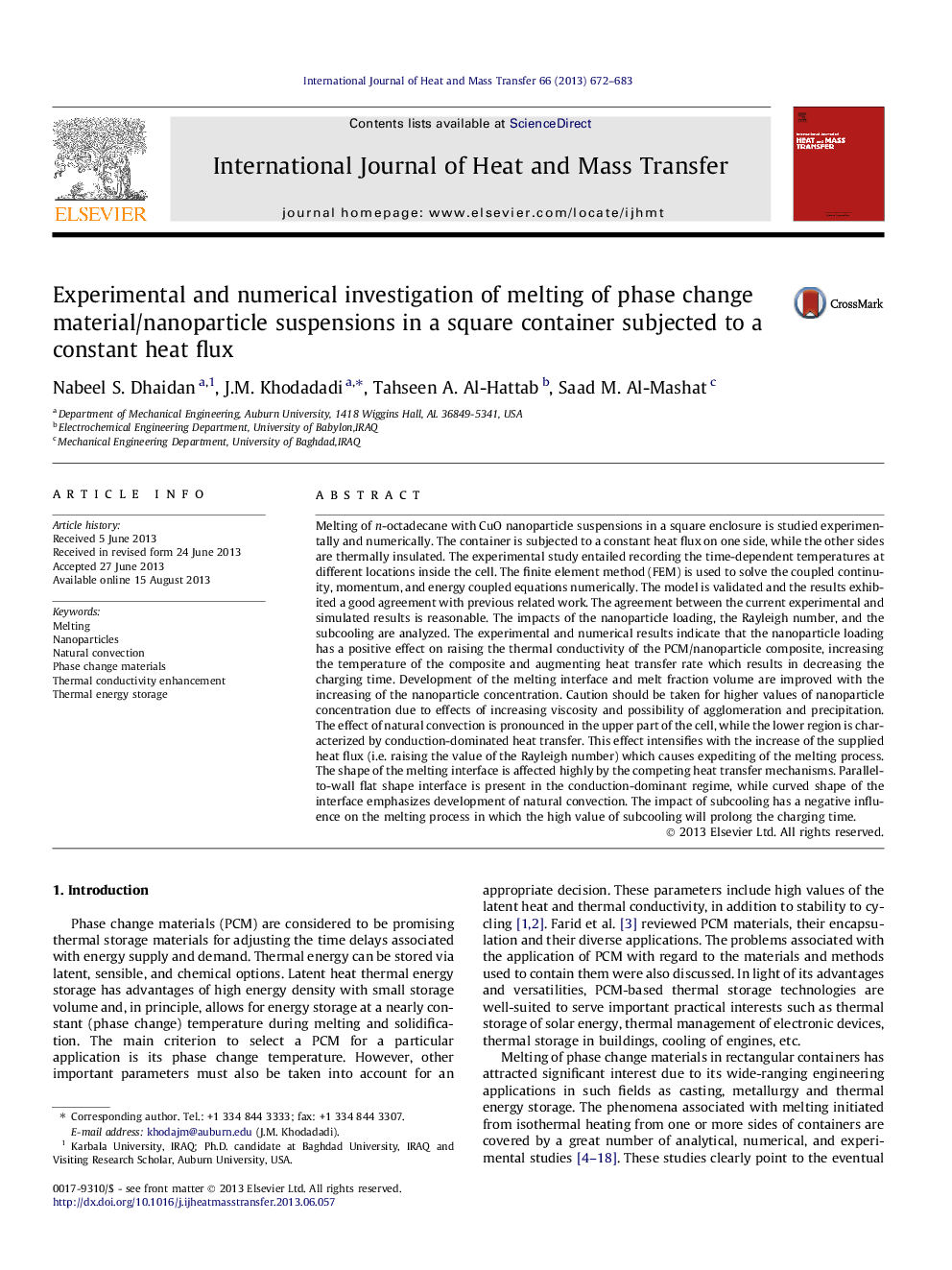| کد مقاله | کد نشریه | سال انتشار | مقاله انگلیسی | نسخه تمام متن |
|---|---|---|---|---|
| 7058165 | 1458076 | 2013 | 12 صفحه PDF | دانلود رایگان |
عنوان انگلیسی مقاله ISI
Experimental and numerical investigation of melting of phase change material/nanoparticle suspensions in a square container subjected to a constant heat flux
ترجمه فارسی عنوان
بررسی تجربی و عددی از ذوب مواد تغییر فاز / سوسپانسیون نانو ذرات در یک ظرف مربع تحت یک شار گرما ثابت
دانلود مقاله + سفارش ترجمه
دانلود مقاله ISI انگلیسی
رایگان برای ایرانیان
کلمات کلیدی
ذوب، نانوذرات، پودر طبیعی مواد تغییر فاز، افزایش هدایت حرارتی، ذخیره انرژی حرارتی،
موضوعات مرتبط
مهندسی و علوم پایه
مهندسی شیمی
جریان سیال و فرایندهای انتقال
چکیده انگلیسی
Melting of n-octadecane with CuO nanoparticle suspensions in a square enclosure is studied experimentally and numerically. The container is subjected to a constant heat flux on one side, while the other sides are thermally insulated. The experimental study entailed recording the time-dependent temperatures at different locations inside the cell. The finite element method (FEM) is used to solve the coupled continuity, momentum, and energy coupled equations numerically. The model is validated and the results exhibited a good agreement with previous related work. The agreement between the current experimental and simulated results is reasonable. The impacts of the nanoparticle loading, the Rayleigh number, and the subcooling are analyzed. The experimental and numerical results indicate that the nanoparticle loading has a positive effect on raising the thermal conductivity of the PCM/nanoparticle composite, increasing the temperature of the composite and augmenting heat transfer rate which results in decreasing the charging time. Development of the melting interface and melt fraction volume are improved with the increasing of the nanoparticle concentration. Caution should be taken for higher values of nanoparticle concentration due to effects of increasing viscosity and possibility of agglomeration and precipitation. The effect of natural convection is pronounced in the upper part of the cell, while the lower region is characterized by conduction-dominated heat transfer. This effect intensifies with the increase of the supplied heat flux (i.e. raising the value of the Rayleigh number) which causes expediting of the melting process. The shape of the melting interface is affected highly by the competing heat transfer mechanisms. Parallel-to-wall flat shape interface is present in the conduction-dominant regime, while curved shape of the interface emphasizes development of natural convection. The impact of subcooling has a negative influence on the melting process in which the high value of subcooling will prolong the charging time.
ناشر
Database: Elsevier - ScienceDirect (ساینس دایرکت)
Journal: International Journal of Heat and Mass Transfer - Volume 66, November 2013, Pages 672-683
Journal: International Journal of Heat and Mass Transfer - Volume 66, November 2013, Pages 672-683
نویسندگان
Nabeel S. Dhaidan, J.M. Khodadadi, Tahseen A. Al-Hattab, Saad M. Al-Mashat,
